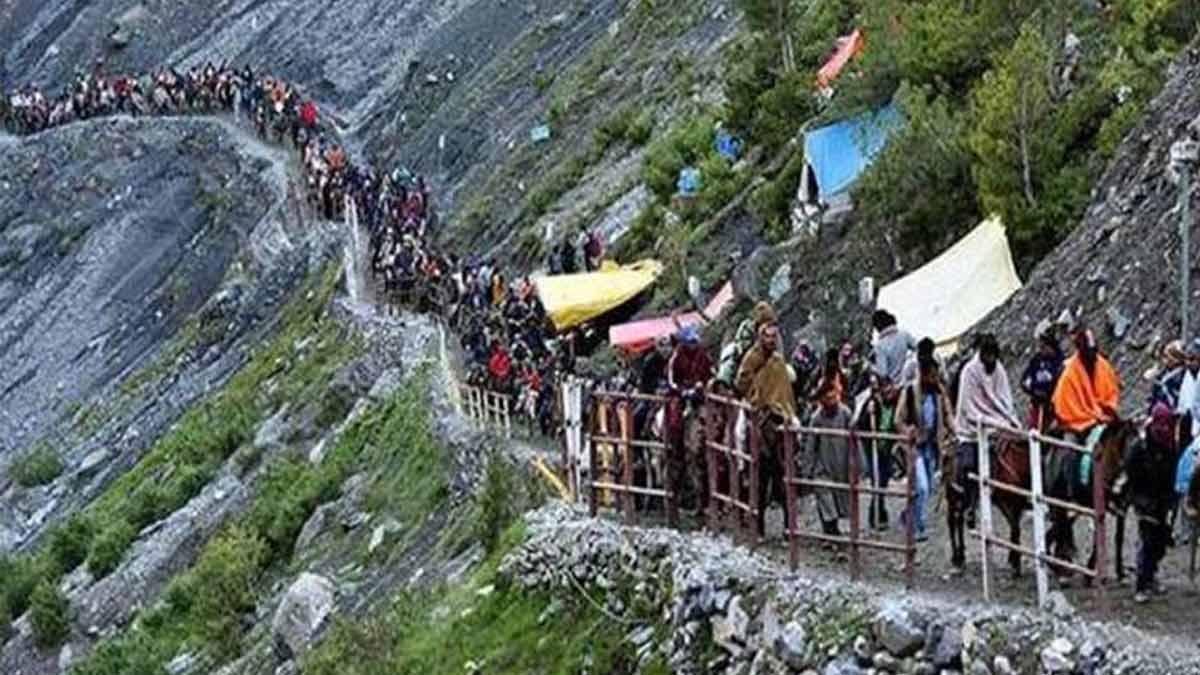The five-day-old annual Amarnath Yatra has been going on without a hitch, with a steady increase in the number of pilgrims on a daily basis. Another contingent of 7,541 devotees on Tuesday left for the Kashmir Valley, another milestone in this year's pilgrimage.
More than 90,000 pilgrims have successfully undergone the pilgrimage this year since its start on July 3.
As per officials, the last batch left the Bhagwati Nagar Yatri Niwas in Jammu in two different security-escorted convoys. "The first convoy, with 148 vehicles and 3,321 pilgrims, left at 2:55 a.m. for the Baltal base camp. The second, which had 161 vehicles and 4,220 Yatris, left at 4:03 a.m. towards the Nunwan base camp in Pahalgam," the officials assured.
Aside from those who have been leaving from Jammu, other devotees have also been coming straight to different transit camps and the two biggest base camps for spot registration, says the Shri Amarnathji Shrine Board (SASB), which coordinates and manages the annual pilgrimage.
Security for this year's Yatra has been greatly bolstered following the horrific April 22 terrorist attack at the Baisaran meadow along Pahalgam, where 26 civilians were targeted and killed by militants supported by Pakistan after being identified by their religion. Following the incident, in order to beef up the strength of the Army, BSF, CRPF, SSB, and local police along the route, an extra 180 companies of Central Armed Police Forces (CAPFs) have been deployed.
The entire range from Jammu to the cave shrine and all transit camps have been put under a multi-tiered security blanket to guarantee the safety of the pilgrims.
Locals once again gave unstinted support to the Yatra. As a gesture of solidarity and in condemnation of the Pahalgam attack on pilgrims, people came out in large numbers to receive the first lot of Yatris with flowers and welcome boards as they entered the Valley at Qazigund after crossing the Navyug Tunnel.
The 38-day Yatra this year ends on August 9, coinciding with the celebration of Shravan Purnima and Raksha Bandhan.
The faithful can approach the sacred cave shrine, which stands at an altitude of 3,888 meters in the Kashmir Himalayas, through two major routes: the classic Pahalgam track or the shorter Baltal route.
The Pahalgam route leads pilgrims along Chandanwari, Sheshnag, and Panchtarni in a 46-kilometer trek that normally lasts four days on foot. Compared to this, Baltal is a mere 14 kilometers, and pilgrims can walk there and back on the same day.
Within the cave shrine is a naturally occurring ice stalagmite that the faithful believe symbolizes the divine presence of Lord Shiva. The sacred formation cymes and recedes in tandem with the lunar cycle.
The Amarnath Yatra is of profound spiritual importance to Hindus, for it is the site where Lord Shiva is said to have revealed the mystery of immortality and eternal life to Goddess Parvati. Legend has it that two pigeons had overheard this heavenly exchange, and that miraculously, mountain pigeons continue to be found streaming out of the cave at the onset of the Yatra every year — a reality which continues to fill pilgrims with wonder and devotion.
Read also| China Objects to PM Modi’s Birthday Wishes to Dalai Lama, Urges India to ‘Act Prudently’


















